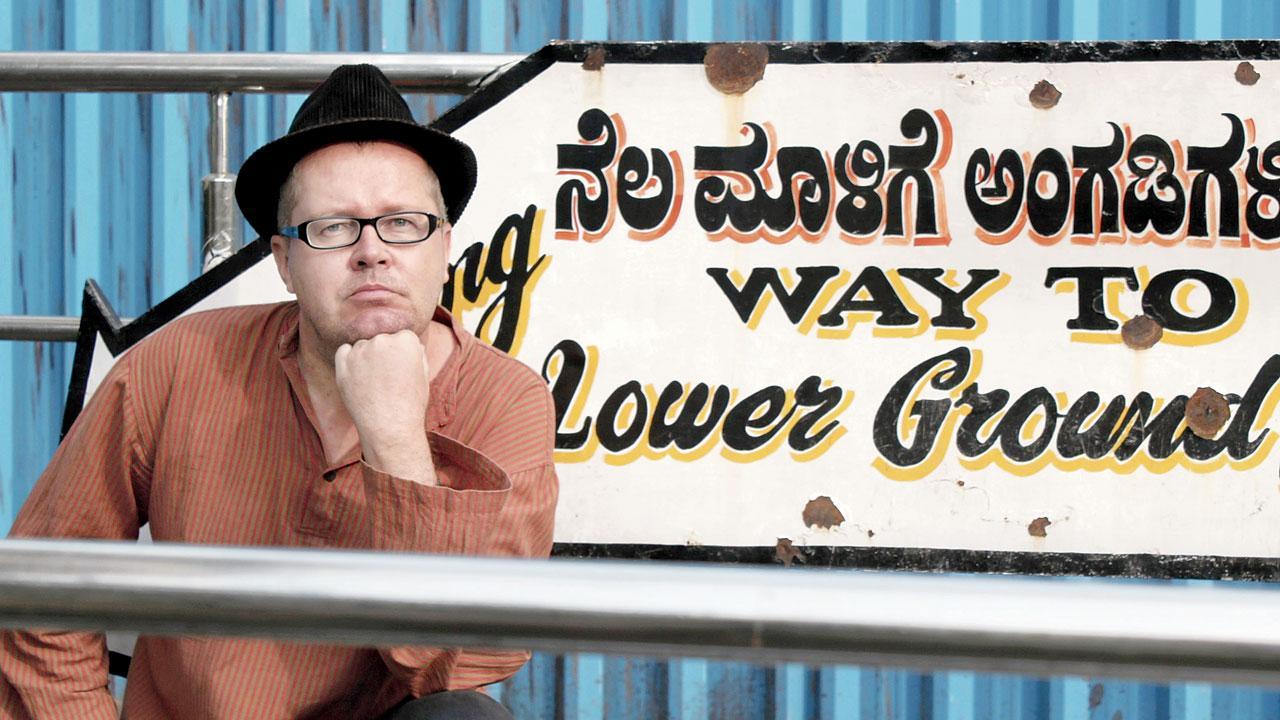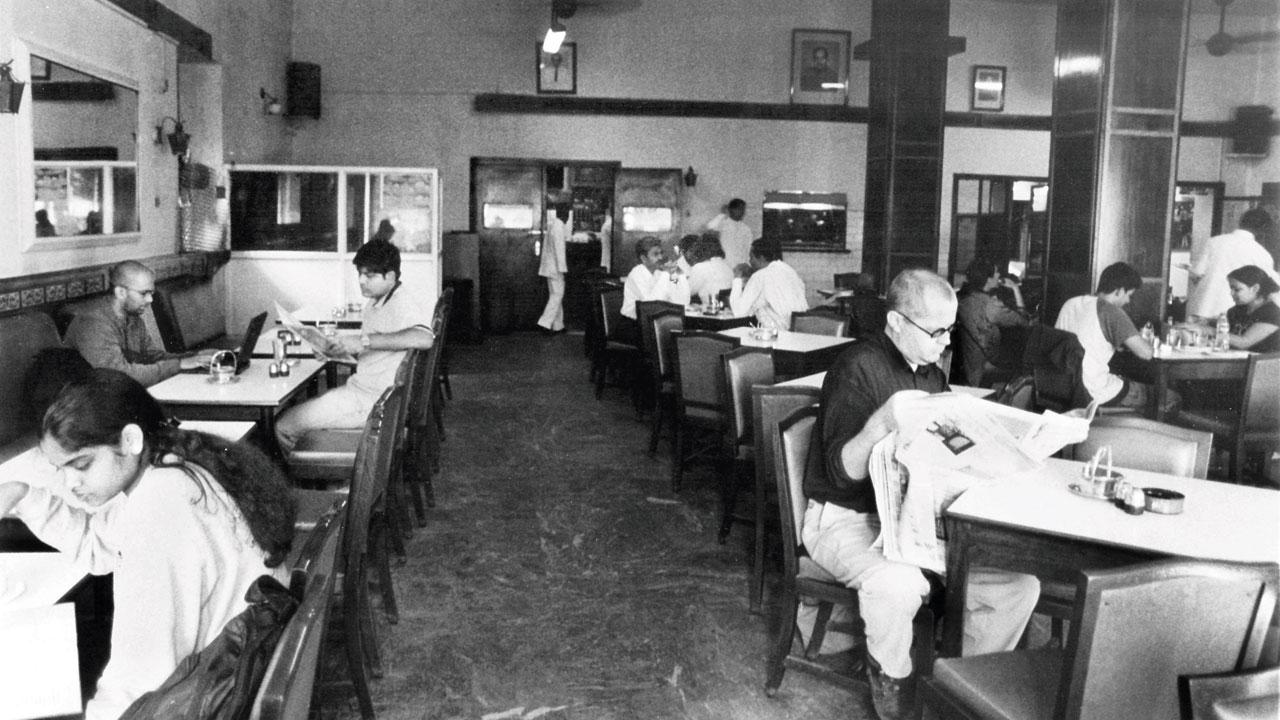Known for his series of detective novels, author Zac O’Yeah follows his nose on a deliciously different journey in his latest book

O’Yeah outside an eatery in Majestic, the area which he haunted while creating the Hari Majestic character
Digesting India, the latest offering by Scandinavian-origin Indian author Zac O’Yeah, takes readers on a compelling exploration of Indian culinary art instead of crime. Published by Speaking Tiger, the reader follows a relentless traveller on a quest to unearth new cultural and culinary experiences, encapsulating the essence of India in its gastronomic wonders. And the best part is that the origins of the book lie hidden in countless experiences that O’Yeah had while creating his detective Hari Majestic and placing pieces of his life in the Majestic area of Bengaluru.
ADVERTISEMENT
“When the pandemic got going,” O’Yeah tells mid-day, “I had just returned from Italy, and was headed to work in Hollywood in early 2020. But instead, I spent the lockdown thinking about what I had done in the past, and it struck me that more than anything else, I’m obsessed with finding good food—my life has been a great food adventure through the cuisines of India. I figured it might be something worth writing about.”

Zac O’Yeah at the iconic Koshy’s on St. Marks Road, Bengaluru. This is where Jawaharlal Nehru dined too
Being adventurous in terms of food is fraught with misadventures as well. Like the time this writer, as an excited 10-year-old, ordered a ‘hot-dog’ at an Udupi restaurant and was served a sandwich covered with grated coconut, or a few years later, when a leading pure veg restaurant chain served a sandwich drowned in strawberry and pineapple sauce as a ‘Russian salad sandwich.’
O’Yeah, too, has made his share of mistakes, but his memories of the same are happier. “Once, in Mumbai, I asked for pomfret when I wanted finger chips because in Swedish, the word for fries is the French ‘pommes frites’. I thought you just spelt it differently here. I got more than culture-shocked when the waiter put down a huge fish curried in the Mangalorean manner. But if I hadn’t made that mistake, I would perhaps not have discovered one of India’s finest cuisines. It’s just amazing what they can do with seafood and I sometimes go to Mangalore just to eat nicely for a week,” he says.
As one goes through Digesting India, one finds that it is a blend of travelogue, culinary exploration, and cultural understanding. Ask him if it was challenging to strike a balance between these three concepts and he says, “It’s basically a memoir: I focused on the finest memories of time-tested restaurants that have survived, in many cases for over a hundred years, and I hope will remain relevant for centuries to come. I tried to visualise a book not written yet, but that I would pick up instantly. This came to mind: One on gourmet food that isn’t only found in seven-star hotels; one that will tell you about nice bars where the bill doesn’t sum up to a thousand bucks; a literate book without being pompous. Since I couldn’t find a book like that, I thought ‘Let me try to write it’.”
He goes on to refer to the realisations he made during his research with an example. “Many Indian cuisines are thousands of years old. That’s when one has to check sources—like say Sangam poetry, to see what was written about millets. It gives an interesting perspective, considering that 2023 has been declared the year of millets while it was already considered royal food in ancient India,” he says.
In his own words, all that O’Yeah does in his book is travel and eat, and find himself in a new paradise. In Tamil Nadu, for instance, everybody goes to Chettinad, but hardly anyone talks about Kongunad, right next door, where gourmet dishes are cooked just as they were millennia ago. “I stumbled upon mutton pallipalayam which is found only in Kongunadu restaurants. It’s a rather humble preparation: Very few masalas, very little oil compared to Chettinadu food… just the fat of the meat that isn’t marinated beforehand. So here’s an ancient Indian dish that could give French nouvelle cuisine a run for its money,” shares O’Yeah.
And then, of course, there are the people, as diverse and as flavourful as the food he encountered. “There were many, and in a way, they co-wrote the book. Prem Koshy of Koshy’s restaurant and bar in Bengaluru—an iconic institution if there ever was one—shared stories of how whenever Jawaharlal Nehru was in town, he insisted on Prem’s dad cooking for him. It was a particular dish: fish grilled with mushrooms, I think. Volunteering as kitchen help for a tribal lady in the Northeast was unforgettable. She made me chop lots of chillies—one kg at least… and lots of rice beer was consumed, of course,” he recounts.
 Subscribe today by clicking the link and stay updated with the latest news!" Click here!
Subscribe today by clicking the link and stay updated with the latest news!" Click here!







